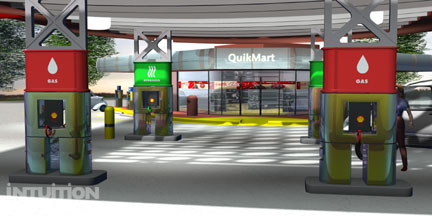As the public becomes more connected, the design trend is large retailers and financial companies are locking into the power of virtual reality (VR) or digitally augmented shopping reality. The goal is transform the virtual mall of your 3D – three dimensional head set shopping experiences to come as close as possible to reality, to prompt your purchases. The objective is to create an immersive retail environment that gives the shopper access to the many features and sales options that are very difficult to communicate in the store, including friendly payment options.
The ability to communicate or demonstrate things to big to show or not available in the physical location including video animated enhancement with customer recommendations, all responsively from the comfort of your chair is the power of the format. WhiteLight Design has delivered several Client 3D CAD product video animations that just touch base with the capability to virtually present and sell new ideas and inventions.
Currently, most customers do not understand how augmented reality or VR can be used to our benefit. The use of VR head sets are still a bit overwhelming and for now, only used by the gamers, architects and tech savvy. The more advanced retailers are installing VR salesrooms. The aim is sales and tracking enticed or enhancing the shopping experience and boosting the check out – last minute incremental impulse sales. Part of the reality is the use of big data tracking or profiling and intelligent microchip RF or radio frequency product tracking tags from store shelf to land fill.
The VR market is comprised of the hardware or headsets and augmented shopping walk through software or green rooms or theme park inspired responsive feedback recliners to create the User Shopping Experience. This may include a cable connected or mobile device headsets as the choices. Based on the computing power needed PC or Game Console headsets are best and more limited (RF) Radio Frequency mobile or wireless device connections are gaining ground. The largest market applications are in retailing and telemedicine medicine with medical training and robotic assisted surgical procedures, along with patient heath monitoring devices. The next step is the customized order, home 3D rapid prototype printer that makes the product right in front of you or at a local product or prototype maker to be picked up or shipped the next day.
A recent Goldman Sachs survey estimates that 3+ million engineers could be using VR by 2025 combined with 3D CAD or computer-aided design and new product development.1 The major automotive and gaming companies iT connected intelligent virtual reality cabin and assembly factory have been at work for years. It is estimated the VR market will grow by billions in the next years. A 2015 report released by TrendForce estimated the VR market could reach $70 billion by 2020.2
- https://www.goldmansachs.com/our-thinking/pages/technology-driving-innovation-folder/virtual-and-augmented-reality/report.pdf
- https://press.trendforce.com/node/view/2210.html

